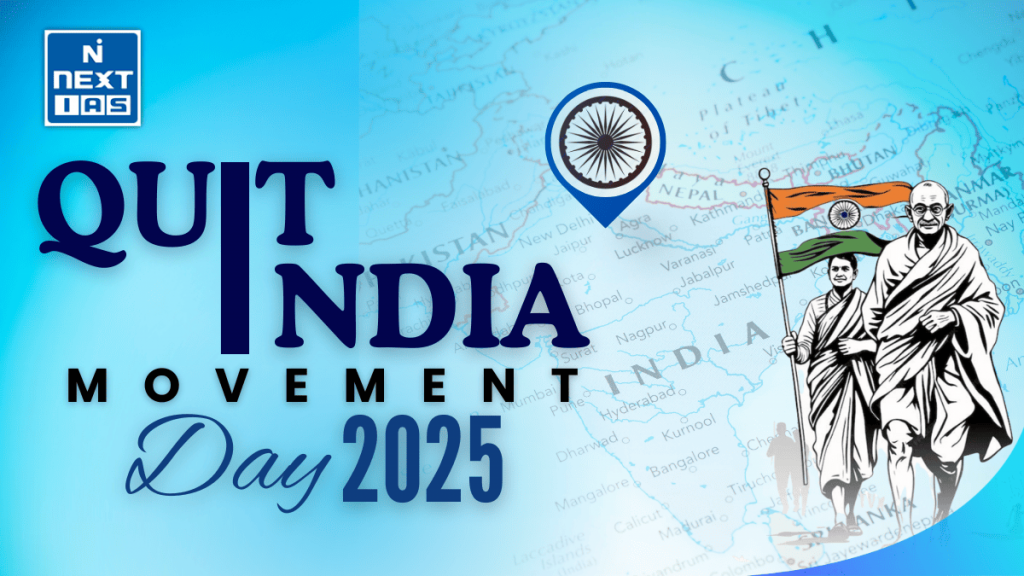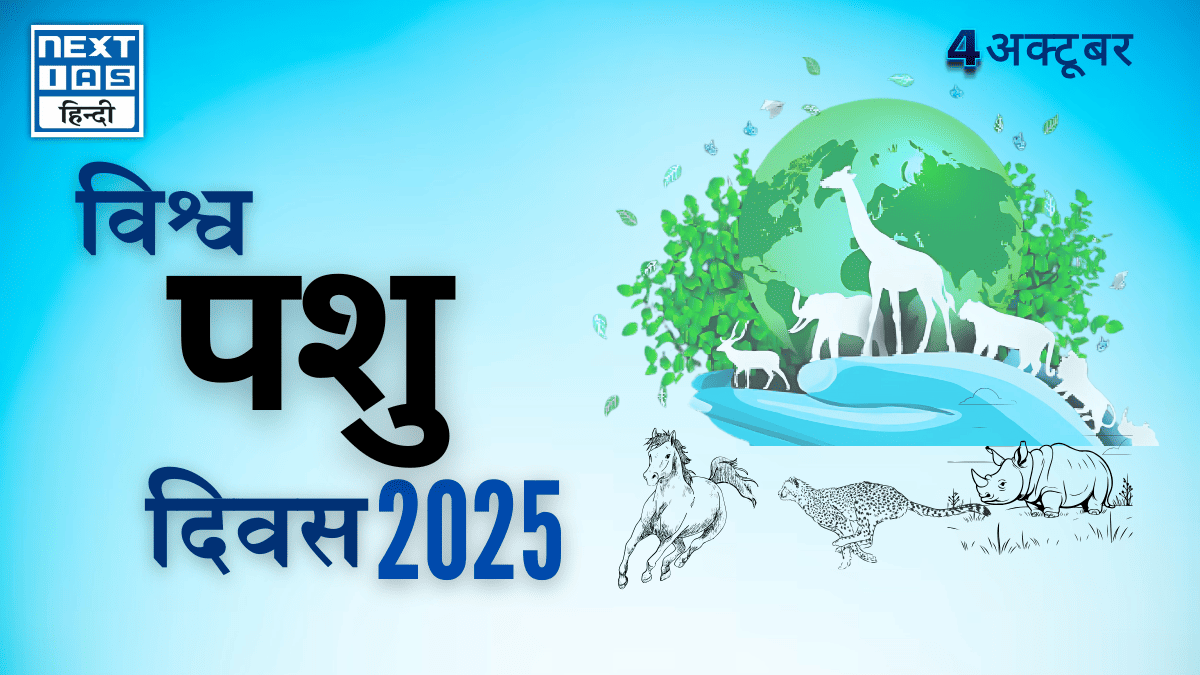
August 8 is the day Quit India Movement was started by a historic resolution of the Indian National Congress demanding the end of British rule in India. Inspired by Gandhi’s cry of “Do or Die,” this resolution inspired mass protests, civil disobedience, and sacrifice all over India, a crucial milestone in the road toward Indian independence.
Historical Background
- The origin of August 8, Quit India Movement Day, dates back to the year 1942, a vital moment in India’s fight for independence.
- On August 8, 1942, a session of the All India Congress Committee met at Bombay (now Mumbai) and passed the Quit India Resolution, which called for the immediate withdrawal of British rule.
- With the cry of “Do or Die,” Gandhi electrified the nation. Gandhi and other senior Congress leaders were arrested the very next day. The Congress was declared illegal.
- The onset of massive repression followed: mass arrests, violence, and bans, but the movement spread like wildfire across India, drawing in women, students, and middle-class citizens.
- Strong local involvement and heart-wrenching sacrifices on the part of people were witnessed in provinces like Assam.
- The Quit India Movement presented an all-India unifying force and a mass civil disobedience campaign that intensified the attempts for India’s freedom that finally culminated in the country’s independence in 1947.
Main Events of Quit India Movement Day
- The main occasions of August 8, Quit India Movement Day, revolve around the decisive moment in 1942 when the Indian National Congress met in Bombay under the leadership of Mahatma Gandhi.
- The All India Congress Committee, on that day, passed the historic Quit India Resolution demanding an end to British colonialism.
- Gandhi had communicated to the masses his famous appeal of “Do or Die” to join in mass protests that were nonviolent in nature.
- This began a nationwide movement of widespread demonstrations, strikes, and civil disobedience across the country from August 8 onward.
- Realizing the threat to their supremacy, the British acted immediately the next day, arresting Gandhi and other prominent Congress leaders on August 9 with the intent of stopping the movement; nevertheless, protest activity shot up all over India, with the ordinary citizen, student, and women making vital contributions to the development of the movement.
- The day, thus, marks the beginning of the heightening of the independence struggle and the unity and determination of the people of India in their quest for freedom.
Importance of Quit India Movement Day
- August 8th, known as Quit India Movement Day, holds immense historical significance in India.
- It marks the momentous occasion of the massive uprising initiated against British colonial rule and the consequent push for the freedom of India.
- The movement started in 1942 under the stewardship of Mahatma Gandhi, uniting people from different social stratifications, castes, and genders to demand freedom at once, epitomized by the stern slogan of “Do or Die.”
- Until then, Indians had mostly resorted to persuasion and negotiation for redress of their problems; the Quit India Movement thundered out a new voice of uncompromised resistance and forced the British to concede that due to the growing wave of civil disobedience and sacrifice, their rule was no longer tenable.
- Broad in shape and spread, the movement became an instrument of realization for women, the young, and other marginalized voices, laying the foundation for a new social and political milieu in India.
- Thus, commemorating it shall honor the valors of common Indians who faced the onslaught of repression with unity and courage and serve as inspiration to future generations to uphold democracy, justice, and national brotherhood.

Impact and Spread
- The Quit India Movement, launched on August 8, 1942, shall, in turn, have profound and far-reaching effects.
- The movement created an unprecedented spirit of unity among Indians of all walks of life, beyond regional, religious, and social barriers.
- Gandhi’s “Do or Die” call echoed all over India, and this call was responded to by common people in protests, strikes, and civil disobedience acts.
- With the British government reacting sternly, repressive measures were enacted; almost within hours, thousands of leaders were arrested-within whom were the entire Congress leadership, and yet the movement continued at the grassroots level.
- Spontaneous eruptions of revolt and uprisings took place in cities, towns, and rural areas alike, with students, women, workers, and common people all joining in.
- Though being put down through brutal repression, the movement further displayed the desire of the Indian masses to be free and severely eroded the grip of British control and confidence.
- The Quit India Movement thus became a turning point in the wider array of mass mobilizations and largely fast-tracked India’s freedom in 1947.
Sacrifice and Legacy
- The term “Sacrifice and Legacy” marks Quit India Movement Day with a bit of courage and selflessness rendered by the common people of India.
- When Gandhiji gave what was described as the “Do or Die” call in 1942, thousands upon thousands of men and women from the four corners of the land-the students, the workers, the women, and the peasants-threatened to risk arrest, torture, and even death for that call.
- With most Congress leaders in jail, Aruna Asaf Ali, Jayaprakash Narayan, and Ram Manohar Lohia went underground to carry on the resistance.
- This was the youth sacrifice in Assam when Kushal Konwar was executed, and Kanaklata Barua was martyred while leading a protest.
- The movement fostered unity among the masses against oppressive British brutalities and strengthened the cry for independence.
- As its legacy, it stands to this day as a witness to the people’s concerted efforts toward freedom and their sacrifices.
- The Quit India Movement roused a national spirit that carried India to freedom in 1947 and forever influenced democratic and anti-colonial movements.
Observances and Activities of Quit India Movement Day
- On the 8th of August, the Quit India Movement Day is observed throughout India through a range of commemorative functions.
- Particular emphasis is laid by educational institutions on assemblies, talks, and quiz competitions on the Quit India Movement and the broader scope of India’s freedom struggle.
- At these functions, public and private organizations and the local municipal authorities are invited to pay respects through solemn ceremonies and tributes to the freedom fighters who sacrificed their lives during the 1942 movement.
- The seminary, lectures, and panel discussions put throughout India’s freedom struggle and the main resistance to consolidate into the meaning of the movement and further along the time into the essence of Gandhi’s nonviolence, patriotism, and unity.
- To develop historical consciousness and instill pride in the heritage among participants, particularly the youth, cultural programs comprising patriotic songs, skits, poetry recitations, and exhibitions are organized.
- In this regard, rallies or processions are occasionally held to reinforce the spirit of national unity.
- Special features and campaigns are launched by media outlets and social media, urging people to ponder on the lessons of the Quit India Movement and their relevance to the values of present-day democracy.
Read our detailed article on:
Conclusion
The Quit India Movement remains a convincing demonstration of India’s undying spirit for freedom, unity, and justice. The very resonance of this movement continues to inspire the ongoing dedication toward democracy, nonviolence, and patriotism.
As we invoke thoughts of sacrifices, we rededicate ourselves toward safeguarding India’s independence while holding equality and national integrity dear to our hearts.
This day also calls upon us to reminisce about the innumerable Indians whose bravery never ceased to fight and to cherish that freedom, well-earned with much bloodshed, simply to safeguard it for the coming generations.
FAQs: Quit India Movement Day
Who was the famous leader of the Quit India Movement?
The famous leader of the Quit India Movement was Mahatma Gandhi.
Who was the president of INC at the time of the Quit India Movement?
The president of the Quit India Movement at the time of its launch on August 8, 1942, was Maulana Abul Kalam Azad, who was serving as the President of the Indian National Congress. Mahatma Gandhi was its most prominent leader and issued the “Do or Die” call.
What is the call of Gandhi in his quit India speech?
Gandhi’s famous call in his Quit India speech was “Do or Die.” He urged Indians to act bravely for freedom: “We shall either free India or die in the attempt,” inspiring nationwide civil disobedience for immediate British withdrawal from India.
Who hoisted the flag in the Quit India Movement?
During the Quit India Movement, many local leaders and freedom fighters hoisted the national flag in defiance of British authority. One of the most famous was Kanaklata Barua, a young Assamese woman who was shot dead while leading a procession to hoist the flag in Assam.
Read this article in Hindi: भारत छोड़ो आंदोलन दिवस 2025





